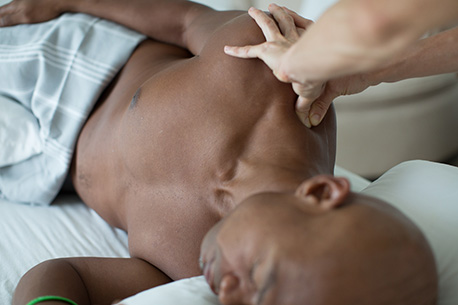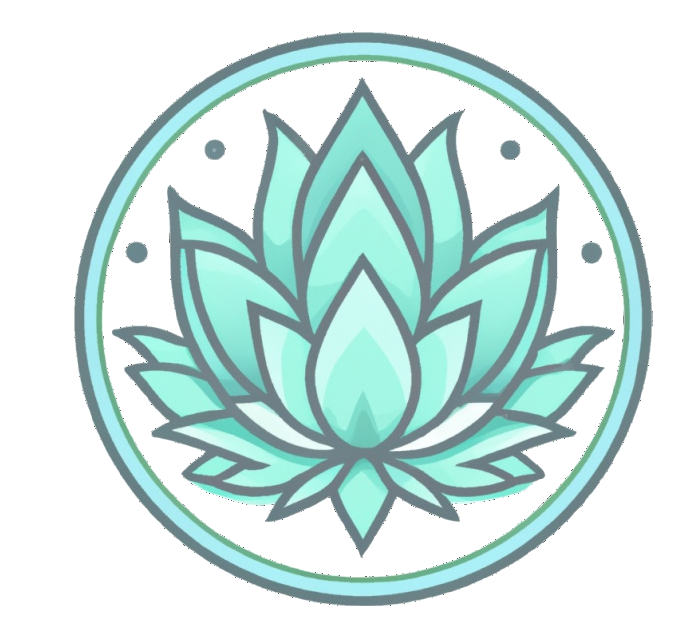Deep Tissue & Sports Massage
Go deeper to release chronic tension

Designed in its entirety for the physically active, a sports massage incorporates techniques from other massage styles to become an entity that works to provide a deep and rehabilitating process that manipulates the soft tissue to prevent injury, alleviate muscle or tendon pain and rid the soft tissue of any stress being held.
Extremely beneficial for athletes, gym goers or even those that are desk bound between 9-5, a sports massage experience will vary from person to person depending on what their injuries, postural imbalances or aggravations are.
Sports Massages can be split into 4 categories:
Pre-Event – Designed to stimulate, this massage will focus on the areas of the body that will be exerted during the activity. Typically given 15-45 minutes before the event.
Post Event – Received within 2 hours of undertaking the activity, it aids in flushing out the tissues to normalize.
Restorative – Often received regularly whilst training for an event or for those looking to improve their personal bests and train harder. Restorative sports massage works to enable further training by preventing injury.
Rehabilitative – Serves to alleviate pain from an injury and return the affected tissue to normal, promoting faster healing by increasing blood flow and reducing inflammation.
Just like the experience will vary, the reasons that people decide on a sports massage will vary. It may be that they have ongoing conditions such as tight calves from running, or tense shoulders from sitting at a desk or have sustained a recent injury from a sprain or an accident.
Even those that have recently undergone recent surgery opt for treatment. Sports massages are also often utilized by those that suffer from migraines and tension headaches. Unlike a full body massage, it is likely that i will focus on specific areas of the body once an assessment has been carried out prior to the treatment.
A client assessment will include a range of exercises that will allow me to observe your posture & symmetry, flexibility and mobility of the muscles and joints along with your range of movements through passive, resistive and active movements. Be aware that when the massage starts – that’s when things will get interesting! I am trained to find your pain threshold, and work just below it whilst advising on your breathing techniques to manage any discomfort.
Sports Massage predominantly uses Myofascial Release techniques to stretch the fascia, a hollow fibrous network of connective tissue made of elastin and collagen that surrounds the organs, bones, muscles and tendons within the body. Poor posture and physical trauma can cause the fascia to become hard and lose elasticity, resulting in a decrease in flexibility. Manipulating and stretching it during a sports massage will relax the fascia and tissue it surrounds to regain the flexibility and range of motion.
Other advanced techniques that will be used include:
Trigger Point Work – trigger points are hypersensitive areas of contracted muscle fibers which can refer pain in a particular pain pattern. By using cycles of isolated pressure and release it is possible to get rid of the trigger points, in some cases forever.
Muscle Energy – This technique often uses an active contraction of the muscle against a resistive source and is mainly used to stretch, strengthen and relax tight postural muscles.
Soft Tissue release – Designed to stretch localised areas of tendons, fascia and muscles that are tight. The tissue and direction of its fibres will be identified, then the either active, passive or weight bearing technique will be applied.
Deep Tissue release – Is mainly used to treat musculoskeletal issues, such as strains and sports injuries. It involves applying sustained pressure using slow, deep strokes to target the inner layers of your muscles and connective tissues. This helps to break up scar tissue that forms following an injury and reduce tension in muscle and tissue.
This list is not exhaustive and techniques that work in synergy with the nervous system may also be used. Please ask if you would like a massage gun, cupping or red/infrared light as add-ons for no extra cost. Your body will undergo trauma during a sports massage, and while it’s likely you will feel a bit sore for a few days, you may also feel cold, thirsty and a bit faint as your body works to metabolize the waste products removed from the soft tissue. Drinking plenty of water and taking a warm bath or shower will aid this process.
Those suffering from any viral infection are advised not to receive a sports massage whilst ill. A sports massage will stimulate the circulation and lymphatic system and can cause the virus to spread in the body. It usually takes 24-48 hours to feel the full effect of a sports massage after which you should feel comfortable, rejuvenated and refreshed.
